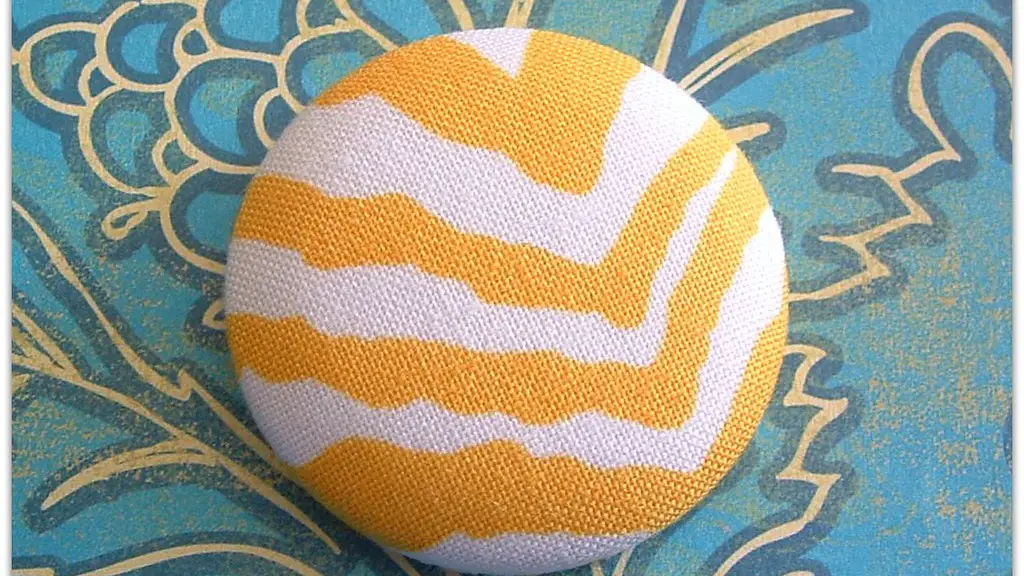Introduction
Refurbishing a sewing machine is more cost-effective and environmentally friendly compared to buying new one. It can seem daunting and complicated, but an understanding of the basics and use of some careful processes, it is possible to refurbish an old sewing machine and return it to working condition. This article outlines essential tips, pointers and processes that can be used to refurbish a sewing machine.
Different Parts Of The Machine
It is important to identify the different parts of the sewing machine before attempting to refurbish it. It is useful to use diagrams and online tutorials to familiarize yourself with the machine’s components. This will help to effectively diagnose and service it, as well as know what spare parts will be needed.
Cleaning and Greasing
A thorough clean is important to ensure that the machine runs smoothly. Begin by removing all the exterior elements of the machine and dampen a cloth with a cleaning solution. Carefully clean all the parts, making sure to leave no dirt or dust behind. Once all the parts are clean, it is important to lubricate the metal parts of the machine with a light oil. This prevents the machine from becoming corroded and helps it to run efficiently.
Changing Belt Drive
If the belt drive of the machine is broken it is necessary to replace it. To do this, firstly the casing must be opened to gain access to the belt drive. A new belt drive will need to be fitted in line with the manufacturer’s guide and then the casing of the sewing machine should be reassembled.
Examining And Replacing Bobbin
The bobbin is an important part of the sewing machine, as it stores the thread which is used to stitch the fabric together. An examination of the bobbin is indispensable and any faults which could affect the efficient running of the machine must be addressed. This could involve either replacing the bobbin or changing the wiring if the bobbin is old and has become worn over time.
Testing The Machine
Once all the steps have been completed and all the parts of the sewing machine have been inspected, serviced and repaired, it is then time to test the machine. It is important to use an appropriate cloth and not actual clothing as the test fabric, to prevent any potential damage to fabrics which the refurbished machine may be unable to handle.
Buying Clutch Motors and Motor Mounts
The clutch motor and motor mount are essential parts of a sewing machine and should be replaced if they are not functioning correctly. It is easier to buy a new part rather than fixing the old part if it is damaged beyond repair. However, when buying parts for a sewing machine, it is important to buy them from a reputable source, to ensure that the quality is good.
Checking Needle and Presser Foot
The needle and presser foot of a sewing machine should also be checked for any wear and tear and replaced if necessary. Generally it is best to buy new needles and presser feet, as these are often less expensive than buying those second-hand. It is also important to select the correct size and needle type for the specific fabric that is to be used when sewing.
Replacing Cams and Other Parts
Cams and other parts of the sewing machine can be replaced if they are broken or worn. It is also a good idea to check the springs attached to the fabric feet and bobbin case assembly, and replace them if they are not working correctly. The most important thing is to use the appropriate tools and follow the manufacturer’s instructions when replacing and adjusting the parts.
Checking Voltage And Electrical Wiring
The inside of the sewing machine should also be checked for any frayed wires or loose connections. If any beading or copper wiring is visible, it should not be touched as it has been put in place for safety reasons. Any wiring problems should be left to professionals to repair, as it can be dangerous for non-professionals to attempt such repairs.
Checking Tension Settings
Once all the parts and components have been checked and serviced, the tension settings of the sewing machine also need to be adjusted. Doing this will ensure that the thread moves smoothly and tension is maintained. The tension should always be tested on a scrap piece of fabric before starting any actual sewing project.
Caring For Your Machine
Once the sewing machine has been restored to its former glory, it is important to take some basic steps to care for it. Regular cleaning and oiling will ensure that dirt does not build up, and the machine will perform at its best. It is worth investing some money in buying appropriate cleaning products for the machine to help keep it in good condition over time.



